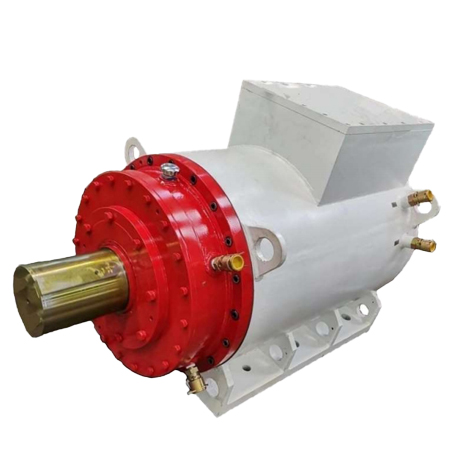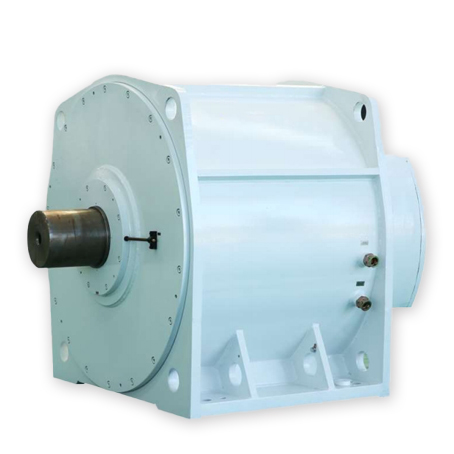The permanent magnet synchronous motor is mainly composed of stator, rotor and housing components. Similar to ordinary AC motors, the stator core is of laminated structure to reduce iron loss caused by eddy current and hysteresis effect during motor operation; the windings are usually of three-phase symmetrical structure, but the parameter selection is quite different. The rotor part is diverse in form, including permanent magnet rotor with starter squirrel-cage, as well as embedded or surface-mounted pure permanent magnet rotor. The rotor core can be made of solid structure or laminated structure. The rotor is equipped with permanent magnet materials, which are conventionally called magnetic steel.
Under normal operation of a permanent magnet motor, the rotor and stator magnetic fields are in a synchronous state. There is no induced current in the rotor part, and thus no rotor copper loss or hysteresis and eddy current losses. There is no need to consider the heat generation problem caused by rotor losses. Generally, permanent magnet motors are powered by dedicated frequency converters, which inherently have soft-starting functions. Additionally, permanent magnet motors are synchronous motors and have the characteristic of synchronous motors that the power factor can be adjusted to the specified value through the strength of excitation. Therefore, the power factor can be designed to the required value.
From the perspective of starting, due to the actual situation where permanent magnet motors are started by frequency conversion power supplies or matching frequency converters, the starting process of permanent magnet motors is very easy to achieve; similar to the starting of frequency conversion motors, it avoids the starting defects of ordinary squirrel-cage asynchronous motors.
In conclusion, the efficiency and power factor of permanent magnet motors can reach very high levels. Their structure is very simple and they have been very popular in the market in the past decade. However, the demagnetization fault is an inevitable problem for permanent magnet motors. When the current is too large or the temperature is too high, the temperature of the motor winding will rise sharply in an instant, the current will increase sharply, and the permanent magnet will demagnetize rapidly. In the control of permanent magnet motors, an overcurrent protection device is set up to avoid the problem of the stator winding of the motor being burned out. However, this inevitably leads to demagnetization and equipment shutdown.
Post time: May-06-2025


